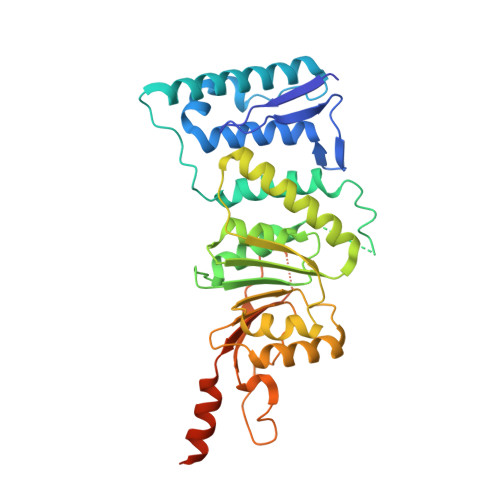Catalytic site remodelling of the DOT1L methyltransferase by selective inhibitors.
Yu, W., Chory, E.J., Wernimont, A.K., Tempel, W., Scopton, A., Federation, A., Marineau, J.J., Qi, J., Barsyte-Lovejoy, D., Yi, J., Marcellus, R., Iacob, R.E., Engen, J.R., Griffin, C., Aman, A., Wienholds, E., Li, F., Pineda, J., Estiu, G., Shatseva, T., Hajian, T., Al-Awar, R., Dick, J.E., Vedadi, M., Brown, P.J., Arrowsmith, C.H., Bradner, J.E., Schapira, M.(2012) Nat Commun 3: 1288-1288
- PubMed: 23250418
- DOI: https://doi.org/10.1038/ncomms2304
- Primary Citation of Related Structures:
3UWP, 4EQZ, 4ER0, 4ER3, 4ER5, 4ER6, 4ER7 - PubMed Abstract:
Selective inhibition of protein methyltransferases is a promising new approach to drug discovery. An attractive strategy towards this goal is the development of compounds that selectively inhibit binding of the cofactor, S-adenosylmethionine, within specific protein methyltransferases. Here we report the three-dimensional structure of the protein methyltransferase DOT1L bound to EPZ004777, the first S-adenosylmethionine-competitive inhibitor of a protein methyltransferase with in vivo efficacy. This structure and those of four new analogues reveal remodelling of the catalytic site. EPZ004777 and a brominated analogue, SGC0946, inhibit DOT1L in vitro and selectively kill mixed lineage leukaemia cells, in which DOT1L is aberrantly localized via interaction with an oncogenic MLL fusion protein. These data provide important new insight into mechanisms of cell-active S-adenosylmethionine-competitive protein methyltransferase inhibitors, and establish a foundation for the further development of drug-like inhibitors of DOT1L for cancer therapy.
Organizational Affiliation:
Structural Genomics Consortium, University of Toronto, Toronto, ON M5G 1L7, Canada.


















